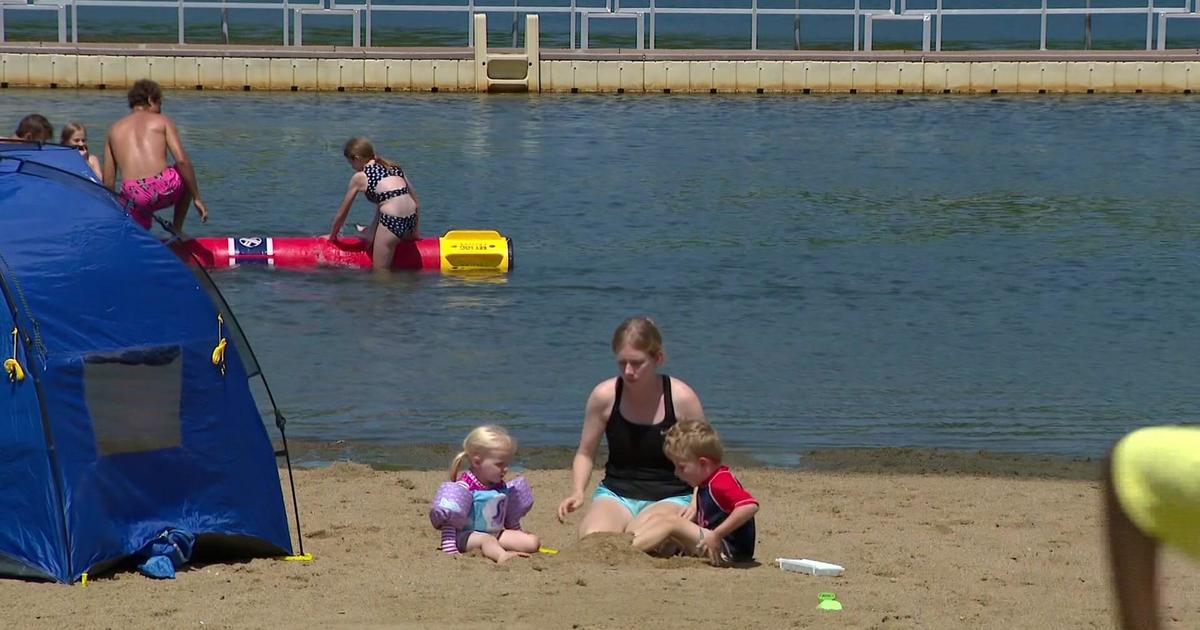Farmers' Almanac predicts cold Minnesota winter with average snowfall. Here's why that doesn't matter
MINNEAPOLIS -- The Farmers' Almanac has issued its forecast for the winter of 2023-2024, and no doubt many are taking its word as gospel, especially here in Minnesota where winter isn't just a season but a frequently endless way of life.
In Minnesota, the almanac is forecasting a winter that will be cold, with snowfall amounts that would count as average for our neck of the woods.
"Winter in the Great Plains and Rockies will usher in plenty of cold temperatures and occasional bouts of storminess, bringing widespread rains and snows," the almanac says.
The perennial publication routinely refuses to reveal the secrets of its forecasting formula; editor Peter Geiger previously said it's based on sunspot activity, planet positions, and the effect of the moon on the Earth. Nonetheless, the almanac does cite a very real meteorological phenomenon in support of its predictions for this winter.
"There are indications that an El Niño (an unusually high-water temperature off the Pacific Coast of South America), will be brewing in the latter half of 2023, lasting into the winter of 2024. If we consider that alongside our tried-and-true forecast formula, it means that cold temperatures should prevail throughout the country and bring snow, sleet, and ice," the almanac says.
The only problem: that's not necessarily how El Niño plays out.
"El Niño means a mild winter, even though the Farmers' says it means a cold winter," WCCO meteorologist Mike Augustyniak said. "So they can't even get that right."
The almanac also says that we can expect to see snow prior to the Christmas holiday, which, all things considered, is a pretty safe bet. Another safe bet? That the snow will last well into the new year.
"Potential blizzards for this first week of March will remind folks in the North Central States that winter isn't over yet," the almanac says.
How did the Farmers' Almanac get its caché?
There are actually two Farmers' Almanacs: the (just plain) Farmers' Almanac has been predicting since 1818 and the Old Farmers' Almanac since 1792.
Both say they average 75% to 80% accuracy, but some meteorologists put the Old Farmers' Almanac to the test, saying it's probably closer to 50%.
As the story goes, in 1815, Old Farmer's Almanac founding editor, Robert B. Thomas, was interrupted by a boy wondering what to put down for the weather forecast of July 13, 1816.
Supposedly, his answer was "rain, sleet, and snow." In July.
Well, as it turns out, the eruption of a volcano in 1816 put so much ash into the atmosphere that that year was dubbed "the year without a summer."
So it goes, it did indeed rain, sleet, and snow that July.
The forecast is alleged to have made the almanac's reputation, even though the almanac itself is skeptical of the story.
What does NOAA say?
There's also a healthy bit of skepticism from the folks who track our state's climatological data. Minnesota's assistant climatologist Pete Boulay said he puts very little stock in the magazine's long-term outlook.
"Part of the problem is they have a secret formula and I guess I don't know what that is," Boulay said. "If you make a forecast and it includes the region from Montana to Michigan, Colorado to Missouri and you say it will be winter somewhere in there, they'll be right. ... It just goes to show you anything can happen in winter, and in the Farmers Almanac they can have it right both ways."
So what does the NOAA Center for Weather and Climate Prediction say about what Minnesota can expect going into the winter months? According to the long-range outlook for November, December and January, NOAA forecasts an above-normal chance for above-average temperatures, across the entirety of Minnesota.
As for precipitation, NOAA is forecasting a below-normal chance for average precipitation across the upper half of the state, and equal chances for normal precipitation in the lower half, including the bulk of the Twin Cities metro area.
for more features.





